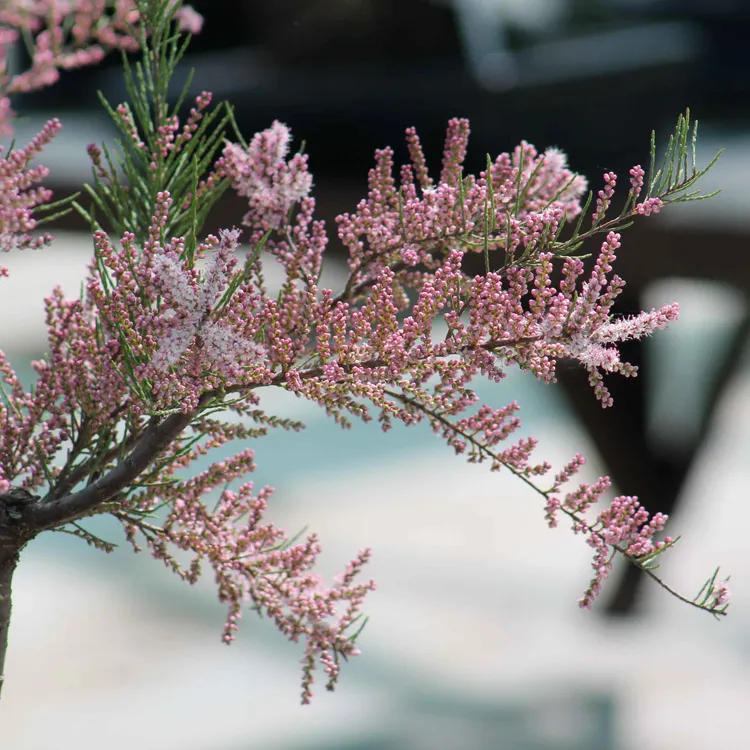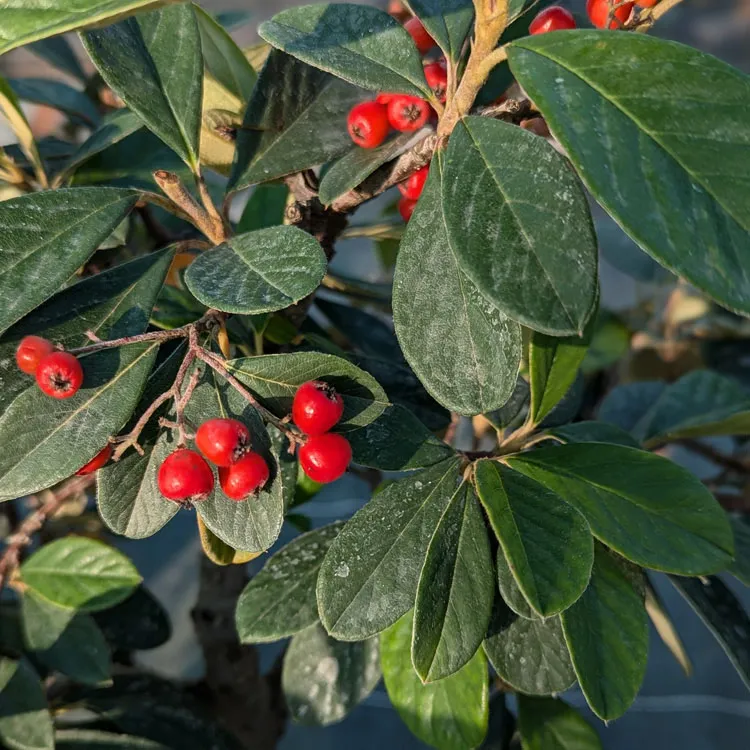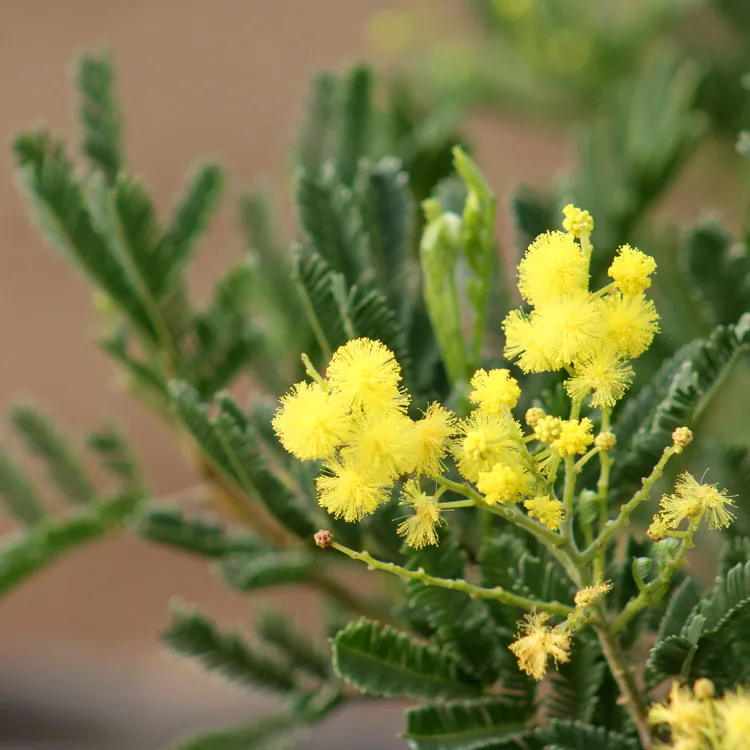Every year it's more or less always the same thing, the good weather settles in, the temperatures soar and we are entitled to one or more periods of heat waves. And climate models predict it's not going to get any better. What are the consequences for our bonsai and how can we protect them from high temperatures?
Why is a bonsai thirsty in summer?
First of all, it is important to understand how a tree works, and what it entails during the summer period.
Water is a vital element for most plants, and trees in particular. The trunk and branches form a gigantic distribution network, which captures water and nutrients from the soil and brings them to the foliage where photosynthesis takes place.
At the level of each leaf, the stomata will open to capture carbon dioxide and release oxygen. But it also means that some of the water that has reached this point will evaporate when the stomata are opened (this is transpiration).
When there is a shortage of water, photosynthesis no longer works at full speed, and the growth of the tree will slow down. This is what happens in nature, many trees are as if at rest when it's hot, before making a final shoot in early autumn, when the temperatures drop again.
However, what is valid for a tree in the middle of nature, which can draw water deep into the soil with its roots, is much less so when it is planted in pots.
When it's very hot, dry (or windy), more water can evaporate from the leaves than the roots can draw to carry it to the end of the year's twigs.
What happens then? The leaves begin to dry out, as if they had been burned. The phenomenon is clearly visible on trees with delicate leaves, such as Japanese maples.
Conifers and evergreens are better equipped to withstand heat and drought. Pine trees have needle-shaped leaves, with a much smaller surface area (and therefore less evaporation). Boxwoods or olive trees (and Mediterranean trees in general) have thicker leaves covered with a protective layer that will limit evaporation.
In summer, it is therefore important to provide your bonsai with enough water. But when it's very hot, it may not be enough. It may be necessary to protect them or organize the place where you grow them differently.
Bonsai pottery can heat up tremendously
When you have a nice bonsai, it's normal to give it a nice ceramic pot. But when it is in direct sunlight, the temperature of the substrate in contact with the pot can exceed 50°C. Try putting your hand on it, you won't leave it for long. Imagine what happens to the roots...
Very hot pottery is also a substrate that will quickly become dry. The water will evaporate before it can even be captured by the bonsai. Large, deep pottery fares a little better, but very flat bowls or small pots for shohins can dry completely in a few hours.
How do you lower the temperature of the pot? You can water more often, or place the bonsai in a place where the temperature is lower.
Setting up your bonsai under shade in summer
A shade house is a net that will allow some of the sun's rays to pass through. There is a wide range of them, and the thing you need to look at is the percentage of light rays that are filtered out.
Some shade cloths can filter up to 50% of light rays, but in practice a 30% shade is enough to protect your trees.
This canvas should be hung on top of your collection, making it overflow all the way around. The goal is that it should protect from late morning until late afternoon, when the sun is strongest. Still, keep direct sunlight in the morning and evening.
Of course, a shade house is far from aesthetically pleasing, but it's a solution that works well when your collection can't benefit from natural shade (e.g. large trees nearby).
Mist to lower the temperature
Have you noticed, after a thunderstorm in the summer, that it is immediately much cooler. A good rain immediately lowers the temperature by several degrees. It's easy to replicate this by installing foggers on top of your collection.
This will create a cloud of fine droplets all around your trees, lower the temperature and increase the humidity. And your bonsai will love it!
This feeling of freshness will continue even after the misting is complete, because the entire environment (the shelves, the floor) will have been flooded. Install a timer to turn the system on 2-3 times a day (to be adapted according to the temperature).
This system is only really interesting if your trees are all installed in one place and are not too spread out. Otherwise, you're going to have to install a lot of foggers and pull a lot of hoses.
Obviously, this consumes water (but not that much because they are very fine droplets).
Be careful, misting is not watering, as only the surface of the substrate will be moistened. You'll still need to water your trees copiously, until the water drains out of the drainage holes in your pots.
A green floor is always cooler than your shelves
A Japanese garden with its immaculate white gravel is magnificent, beautiful granite shelves on which your most beautiful trees are placed are superb. But all these mineral materials absorb a lot of heat (in the same way as ceramic pottery), and continue to release it during the night.
These places can become real furnaces, especially when there is no shade at all.
If you don't want to install a shade or foggers, simply place your pots on the ground (or grass). Always water this area copiously and widely so that it retains a certain coolness.
This technique works better with large trees than very small ones, which will hardly be able to stay in full sun all day (unless you have the watering can in your hand several times a day).
At the nursery, all the prebonsai we grow are in pots directly placed on the ground. This direct contact means that the bottom of the pot will better retain moisture and the risk of water stress is lower. And it's not uncommon to see roots coming out of the holes at the bottom to try to dive into the ground.
Are there different requirements for different species?
So far, we've only talked about bonsai in general, without really going into the characteristics of each species. Not all bonsai trees water the same way, and a maple will require more water and toast more easily in the sun than a pine tree.
On the other hand, the objective of this article is rather to manage situations where temperatures rise above normal. Where there really can be a danger to your trees.
During a heat wave, even a pine tree that is well equipped to withstand heat and drought will appreciate less extreme temperatures and higher humidity. When the weather becomes less sweltering again, you can then put it back in direct sunlight.


 Production of French Bonsai
Production of French Bonsai
























































































